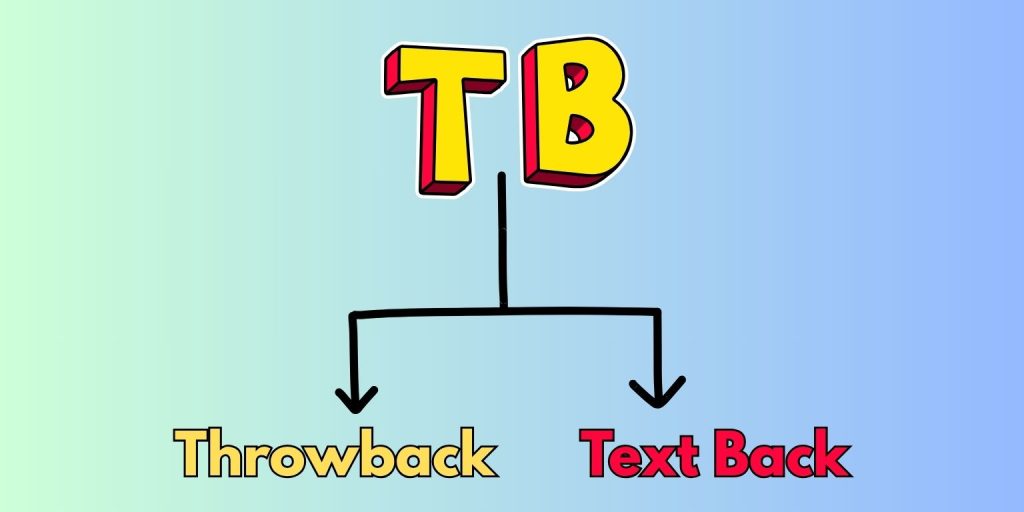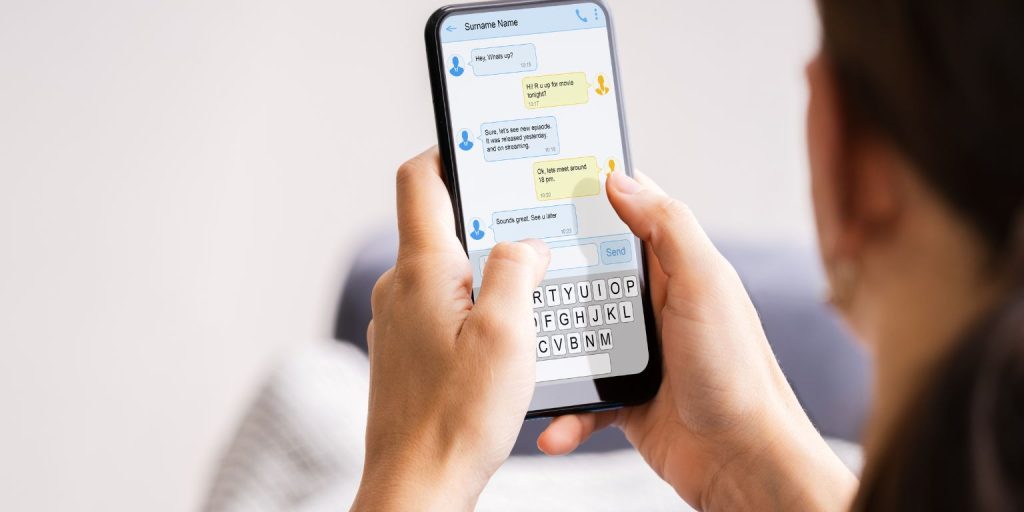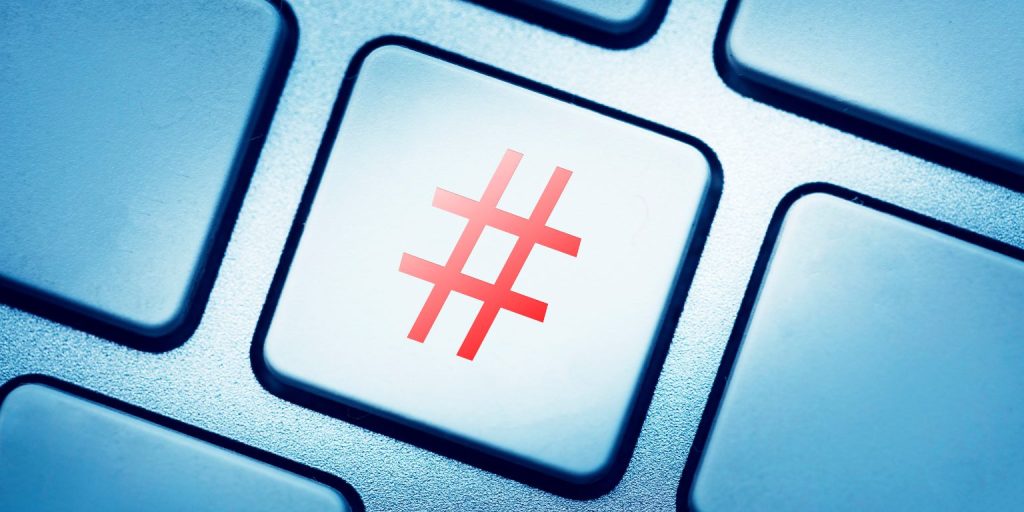You probably saw “TB” on social media apps like Instagram or Snapchat, or in a text message. You may have wondered what it means. “TB” is a short way to say different things. If you do not know how people use it, it is easy to misunderstand.
This article shares what “TB” means on different apps. It gives real examples and shows how people use it. It also explains how “TB” can be tricky for computer programs that understand language.
What “TB” Means
“TB” usually means two things: “Throwback” or “Text Back.”
- “Throwback”: People use this when they post old photos or memories. You will often see it with a hashtag, like #TB or #TBT. These posts can be about old trips, childhood pictures, or past events people want to share or remember.
- “Text Back”: This is more common in private messages. It is a quick way to say, “Please reply to my message.” Someone might just write “TB?” in a chat to get your attention, instead of typing a long sentence.
Some people mix up “TB” with “TBH.” They are not the same. Knowing the difference helps you reply the right way.
How People Use “TB” on Different Apps
Different apps use “TB” in their own ways.
Instagram made “Throwback” famous. People post an old selfie or a vacation photo and write “#TB” with it. You will often see it with #TBT, which means “Throwback Thursday.” This use is about memories and old posts, not messages.
Snapchat
“Text Back” shows up a lot on Snapchat. Someone might send you a blank photo with “TB” as text. They want a fast reply. It is short and casual, and friends who know each other often use it this way.
TikTok
On TikTok, “TB” can mean both. Some people use “TB” in a video about old times, showing childhood clips. But people also use it in comments when they ask others to reply or message them.
X (Twitter)
X(Twitter) uses both meanings. Some people tweet old memories with “TB.” Others reply to posts with “TB?” meaning they want a reply. The meaning depends on the message and who is writing it.
This mix of meanings shows why it is important to understand not just the letters, but the whole message and where you see it.
“TB” vs. “TBH”—What Is the Difference?
Many people confuse “TB” and “TBH” because they look alike. But they mean very different things.
- “TBH” means “To Be Honest.” People use it to give their opinion, say something nice, or make a point. For example, “TBH, I did not like the movie.” Or, “TBH, you are one of the nicest people I know.”
- “TB” by itself never means “To Be Honest.” It either points to something from the past or asks someone to reply.
You might see them in the same message, like: “TB to last summer. TBH, it was the best trip of my life.” But each one has its own job in the sentence.
Examples of “TB” in Real Messages
Here is how people use “TB” in real messages and social media posts:
- “TB to our beach trip. That sunset was amazing.”
- “TB when you are free, I need to talk.”
- “Just found this picture in my phone. #TB”
- “Hey, are you okay? TB.”
- “TB to that fun concert night 🔥”
These examples help you see how people use short words in casual talk. Sometimes it is just one or two words. But the meaning comes from everything around it—like emojis, the tone, and the app you are using.
Why “TB” Is Hard for Computer Programs
Humans can usually guess what “TB” means by looking at a photo, an emoji, or the type of message. But for computer programs that understand language, this is hard.
One problem is that short words like “TB” can have more than one meaning. If a computer program sees “TB?” it needs to know if the user wants a reply or is sharing an old post. This depends on the context, which computers do not always have.
Another challenge is grammar. Social media language often misses words like subjects or verbs, and it does not always follow strict grammar rules. “TB” is one example of this. Computer programs trained on only correct sentences might not understand what these short words mean in real life.
To help computers understand slang like “TB,” people who build these programs need to train them with real messages from chats and social media. Without this, programs can give wrong answers or miss the real meaning.
Why Hashtags Like #TB Are Popular
Hashtags like #TB or #TBT are more than just words. They are part of how people use social media. Instagram made them popular with “Throwback Thursday,” where users post old photos on Thursdays.
These hashtags help in several ways:
- They help more people see posts.
- They create a feeling of shared time and memories.
- They make content feel more personal.
- They connect users to bigger social topics, like looking back at old times.
Even marketing teams use them to make products or brands feel more relatable. A simple “#TB” can help a post reach more people and connect with a larger audience.
Other Short Words That Get Mixed With “TB”
Online talking is full of shortcuts. Some look or sound like “TB.” Here are a few that can confuse people:
- TBH: To Be Honest
- TBT: Throwback Thursday
- SMH: Shaking My Head
- DM: Direct Message
- OOTD: Outfit of the Day
- FYP: For You Page (on TikTok)
Each one has its own use. Sometimes their meanings change based on how people use them. That is why understanding the situation matters.
Where Do Slang Words Like “TB” Come From?
New slang often starts in group chats or small online groups. Teenagers, popular online people, and meme pages often create or spread these short words.
Over time, these words move to bigger apps. Once they are on apps like TikTok or Instagram, they spread faster. A post that many people see can make a new phrase common very quickly.
Slang also changes across different countries and age groups. What one group says often means something different to another.
Summary: What to Know About “TB”
- “TB” can mean “Throwback” or “Text Back.”
- Its meaning changes based on the app or message.
- Social media and private messages are full of these short words.
- Computer programs struggle to understand slang without context.
- Knowing the app and the tone helps you figure out the meaning.
For Developers and Programmers: Making Systems Understand “TB”
If you build computer programs that read chat or social media text, you need to be ready for slang like “TB.”
- Train your programs with real text from apps like Instagram, Snapchat, and TikTok.
- Use other clues like emojis, time, or hashtags to help the computer guess the right meaning.
- Build a dictionary of slang that you update often.
- Add test examples that include short replies, captions, and different ways of using words.
This helps computers handle words that are not clear. It also helps improve replies, suggestions, or checking what people say online.
Conclusion
“TB” is a small word with a big meaning. It changes based on where and how people use it. From old memories to asking for replies, it connects people quickly with just a few letters.
If you found this helpful, share it with friends. You can also leave a comment with your favorite short words for texting. Do you want us to explain another slang word? Let us know below.





